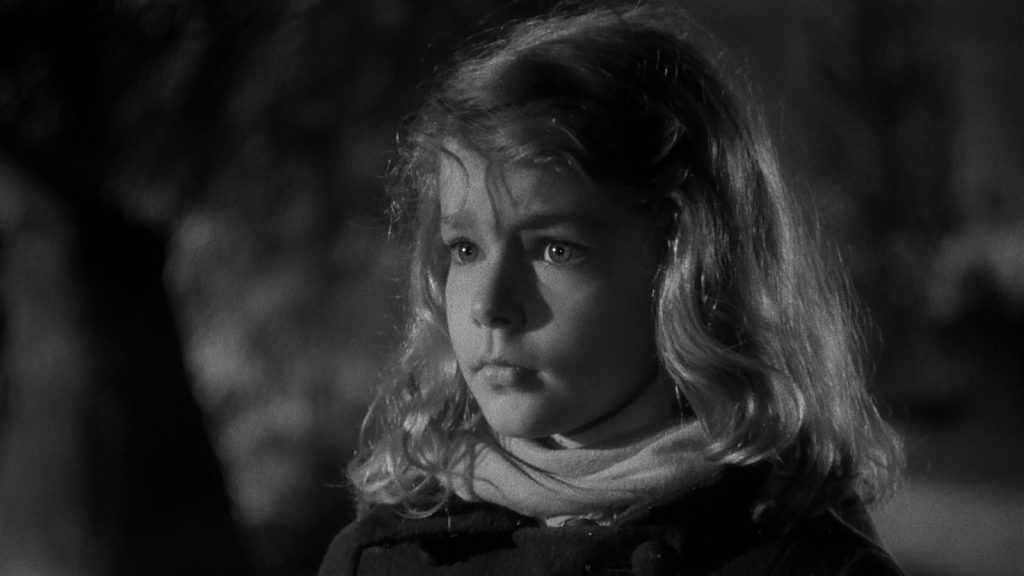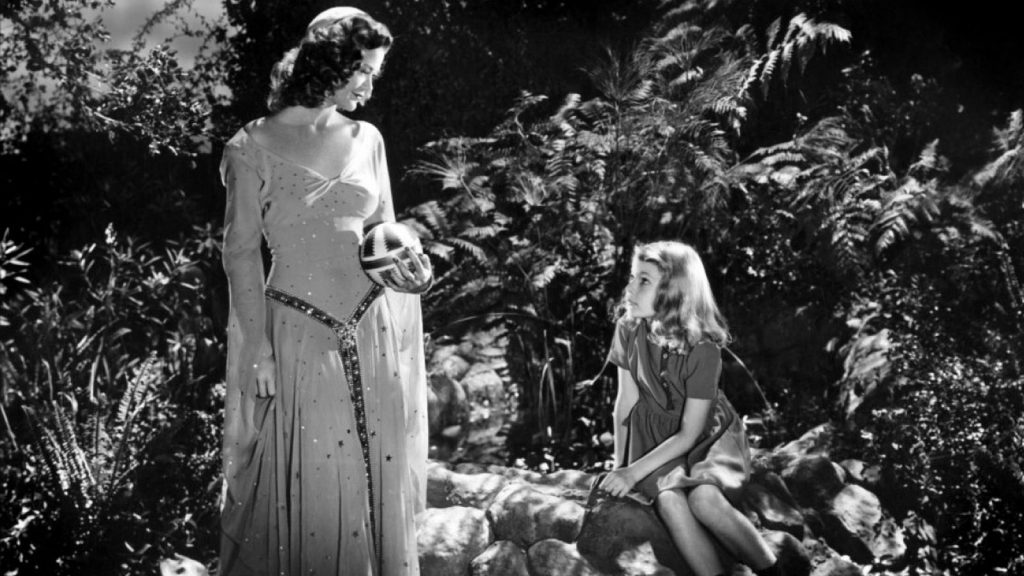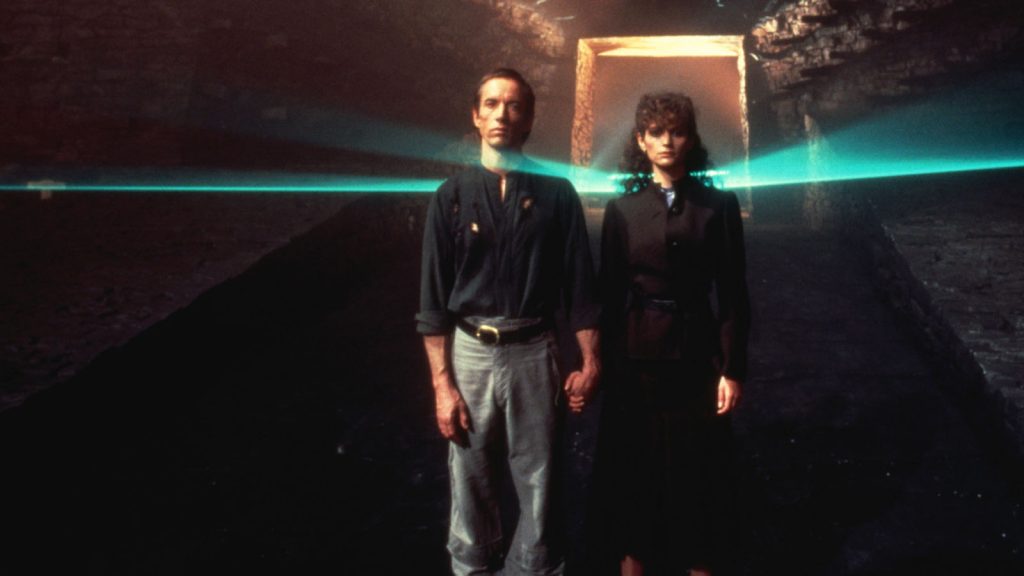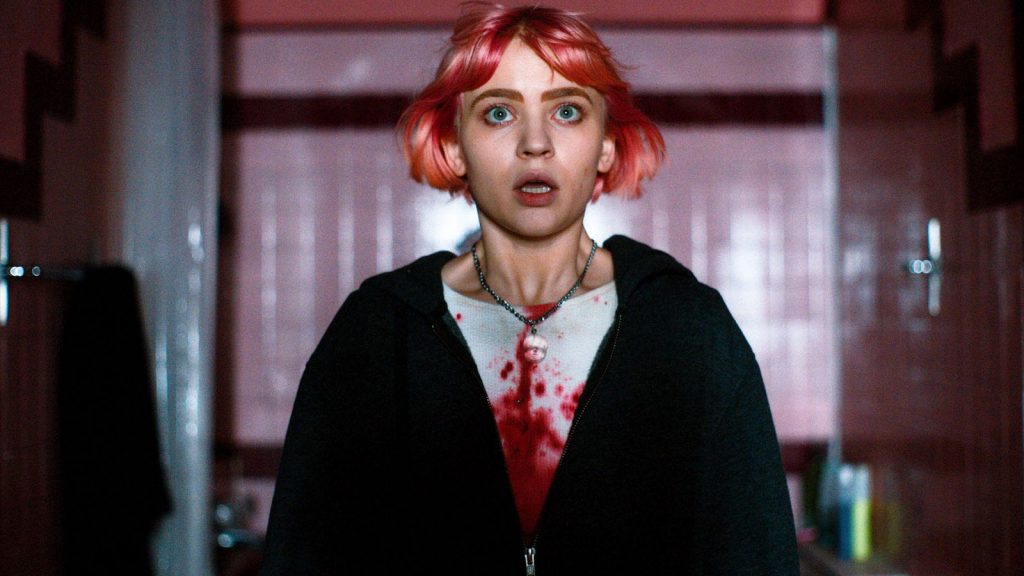
At this crazy moment, when film history is caught in the grip of multiple clichés that grind on and on and on—puerile revenge + empowerment fantasies (pioneered by Quentin Tarantino), a lazy equation between the mass-marketed and the genuinely popular, an even lazier equation between audio-visual entertainment and technological progress—it might come as a shock to revisit Val Lewton’s nine-film horror cycle for RKO in the ’40s. Lewton’s probing, literate, bargain-basement films (budgets around $150K, punishing shooting schedules, B-level stars) are models of narrative and poetic economy. They are also uniquely unsettling. As time goes on and the valence of the world changes, the nature of suspense and narrative urgency changes in turn: what loomed large in 1944 might seem all but unrecognizable in 2023. But when the emotion is felt from within rather than milked from without, it cuts through time like a freshly sharpened scythe.
Of all the titles in the Lewton cycle, The Curse of the Cat People, a 1944 sequel to the Lewton unit’s 1942 smash-hit Cat People, is the most difficult to classify as horror. The principal character is a child named Amy (Ann Carter), plagued not by ghosts or malevolent forces but by a nervous father (Kent Smith) anxious to blot out every indication of “abnormality” in his daughter—along with any mention of his first wife, Irena (Simone Simon), the ill-fated heroine of the earlier film. Amy is also plagued by loneliness. Let’s say that this 6-year-old girl is a poet, and poets are lonely at any age. Let it also be noted that while the screenplay credit goes to DeWitt Bodeen, Lewton himself was the principal writer on The Curse of the Cat People, and that he incorporated more than a few details of autobiographical origin into the narrative.
The magic of Lewton’s films, no matter who’s directing them (this one was started by Gunther von Fritsch and finished by Robert Wise), is found in their unique combination of attributes, so different from everything else around them (still true). They are simple in the very best sense, with a negligible amount of wasted motion. The characters are either openhearted and sincere or lost in a tangle of delusions that result in evil outcomes. The films get maximum impact from a minimum of means—famously, with an expressive and extraordinarily subtle use of darkness and light and an equally extraordinary and refined use of sound. And there is another quality, more delicate and more difficult to describe. Because the tone of these films is so friendly and quiet, the intrusions of evil, upset, despair, or plain sadness are so deeply felt that they reverberate like ringing bells. Each tiny frisson matters, generated within this fierce artistic commitment to a proper depiction of goodness.

Every moment with Ann Carter’s Amy has a quiet emotional force. This has a lot to do with the aforementioned simplicity and directness. Unlike Margaret O’Brien or Peggy Ann Garner, she is not called upon to do anything showy, elaborate, or technically difficult (actually, the same is true of all the actors in Lewton’s films—when they’re working for other producers and directors, they seem to be altogether different human beings). Amy is more a matter of presence than performance, drawn out of what is already there in Carter herself (it was still there in 2006 when I met her in person) through the precision of the writing and the patience of the filmmakers: watchful, intelligent, and sweet, with eyes that register everything with great sensitivity and a deliberate slowness that sets her apart from everyone else in the movie.
The scenes between the lonely little girl and her imaginary friend unfold like a suite of poems, each one thematically related but with a rhythm and a tone of its own. Lewton was extremely shrewd about working within his budgetary limitations. The artificiality of the backyard set where they meet and play isn’t exactly accentuated but is used to advantage. Irena and her magical aura come into being by way of fan-powered gusts of wind, sparkling sequins and tinsel, gentle pans choreographed to beautifully executed lighting cues. Simon’s Irena is a genuinely otherworldly presence, moving gently and imperiously in a storybook frame, dressed in a sparkling gown that looks like it was bought off the rack for $32.50. But the air of chintziness perfectly echoes the vision of a mid-century American child. And the unmistakable undercurrent of mourning, while local to the narrative, carries the sense of massive loss felt during WWII. Alexander Nemerov wrote a book about Lewton, Icons of Grief, from this singular perspective, and I think he was essentially right. Mourning runs through all the great Lewton films, but The Curse of the Cat People seems to embody, unassumingly but in retrospect quite clearly, an aura of dread that had settled over the world like a fine mist.
There are other noteworthy aspects of this film. I love the tamped-down friendliness of the ancillary characters—stepmother (Jane Randolph), teacher (Eve March), and the domestic worker played by the mellifluous Trinidadian calypso singer Sir Lancelot; the storybook invocations of heroic knights and Sleepy Hollow; the exalted ordinariness of the family, their home, their possessions, their relationships. The mirroring story of the addled dowager (Julia Dean) and her embittered daughter (Elizabeth Russell) in the “haunted mansion” down the way (the main set for The Magnificent Ambersons, which Lewton used often) is the least surprising aspect of the film, and the resolution of its separate plotline clogs up the narrative in the final stretch. All the same, this sad psychodrama is affecting and deeply human, and it adds another layer of emotion to one of the few films ever made that stays true to the capacity for wonder, the vulnerability and the durability of childhood. 🩸

is a filmmaker and writer in pre-production on his next film, My Ship.
A lipstick and makeup mirror slip from fear-frozen hands, a sack spills corn flour along a grassy trail, a ball floats atop a geyser of water, the rattlesnake whir of castanets, blood seeps in from below a heavy door...
BY JOSÉ TEODORO | October 29, 2025
Though it’s not as widely known as the other B-horror films that Val Lewton produced for RKO between 1942 and 1946, The Seventh Victim is the cycle’s poetic pinnacle. Watershed works that feel like whispers...
BY MICHAEL KORESKY | October 31, 2021
A nurse leads a catatonic through an expanse of moonlit cane. They pass displays of sacrificed animals before encountering the towering, shirtless, dead-eyed Black man who grants them entry to a private outdoor religious ceremony...
BY JOSÉ TEODORO | March 17, 2023

This pre-Code offering packs a lot of story into its typically brisk running time, with several plot threads weaving together a (not always successful) tapestry of spooky and criminal doings.
READ MORE >
BY ANN OLSSON | Month 00, 2021

In what could be the fastest-resulting rape revenge movie, a drunken lout brutally forces himself on Ida, the young woman who doesn't return his affections, during a party over Labor Day.
READ MORE >
BY LAURA KERN | Month 00, 2021

Beast is a lot of movies in one package - fractured fairy tale, belated-coming-of-age story, psychological drama, regional horror film - but above all it's a calling card for its leading lady, Jessie Buckley.
READ MORE >
BY LAURA KERN | Month 00, 2021